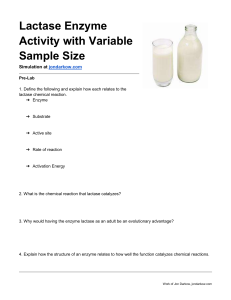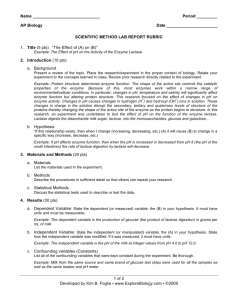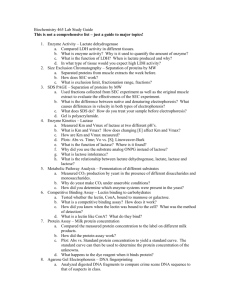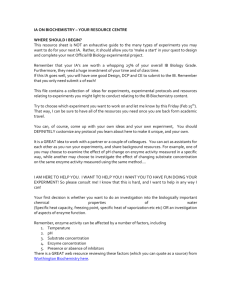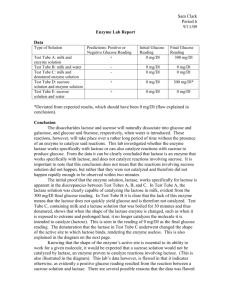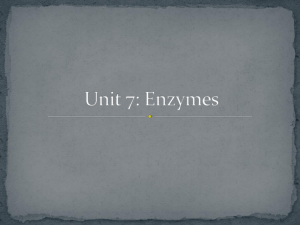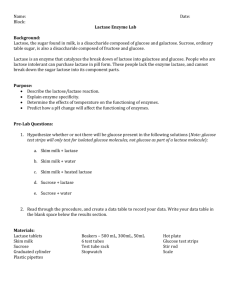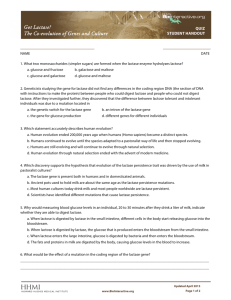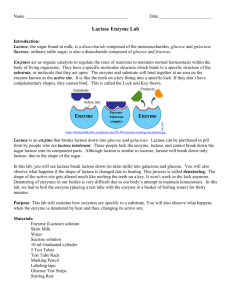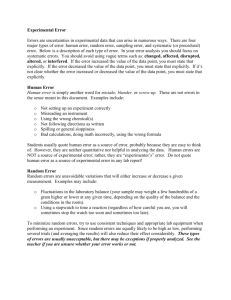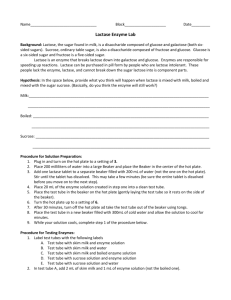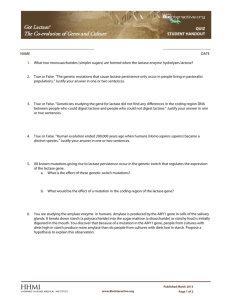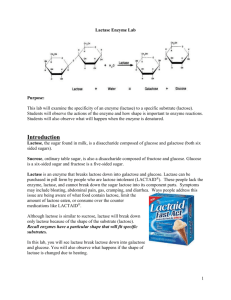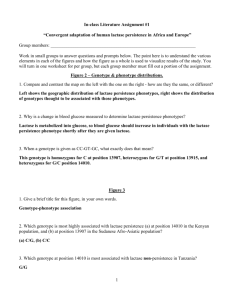Lactase Enzyme Activity - with Data Analysis
advertisement
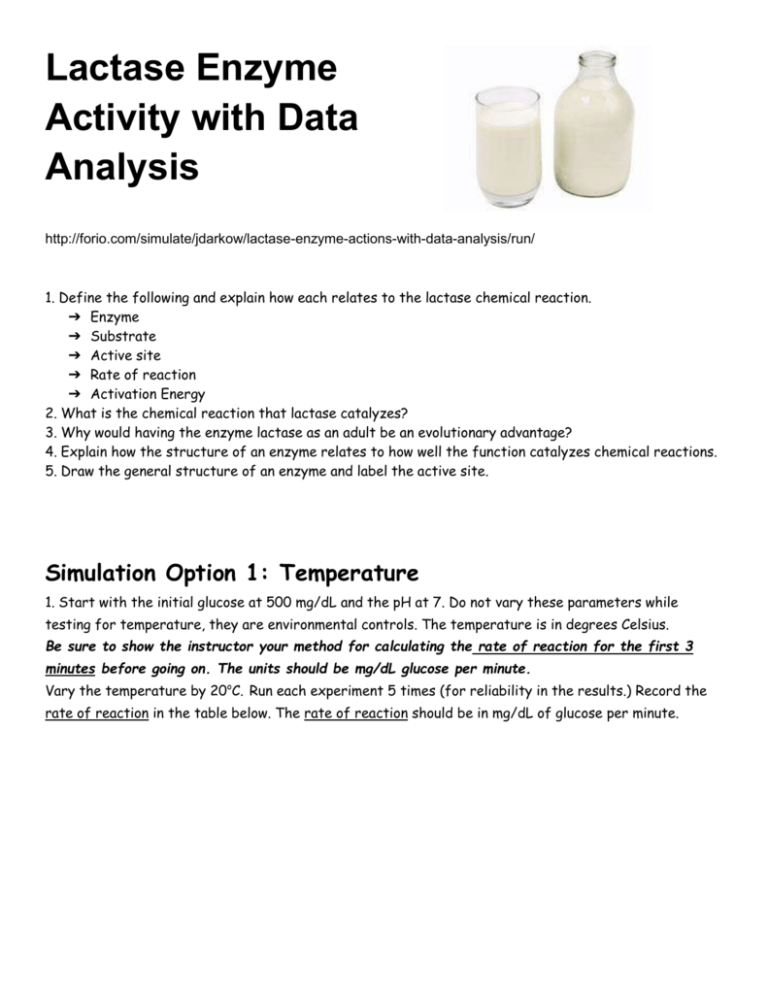
Lactase Enzyme Activity with Data Analysis http://forio.com/simulate/jdarkow/lactase-enzyme-actions-with-data-analysis/run/ 1. Define the following and explain how each relates to the lactase chemical reaction. ➔ Enzyme ➔ Substrate ➔ Active site ➔ Rate of reaction ➔ Activation Energy 2. What is the chemical reaction that lactase catalyzes? 3. Why would having the enzyme lactase as an adult be an evolutionary advantage? 4. Explain how the structure of an enzyme relates to how well the function catalyzes chemical reactions. 5. Draw the general structure of an enzyme and label the active site. Simulation Option 1: Temperature 1. Start with the initial glucose at 500 mg/dL and the pH at 7. Do not vary these parameters while testing for temperature, they are environmental controls. The temperature is in degrees Celsius. Be sure to show the instructor your method for calculating the rate of reaction for the first 3 minutes before going on. The units should be mg/dL glucose per minute. Vary the temperature by 20oC. Run each experiment 5 times (for reliability in the results.) Record the rate of reaction in the table below. The rate of reaction should be in mg/dL of glucose per minute. 0oC 20oC 40oC 60oC 80oC Trial 1 Trial 2 Trial 3 Trial 4 Trial 5 Mean Standard Deviation Standard Error of the Mean (SEM) 2. On the axes provided, create an appropriately labeled graph to illustrate the sample means of the five temperatures tested to within 95% confidence (i.e., sample mean ± 2 SEM). 4. What are the results of the simulation? What is the optimal temperature? Is there statistical significance? Explain. 5. Explain why your results of the optimal temperature of the lactase enzyme make sense for the human enzyme? Explain the results in terms of the structure and function of proteins. 6. Predict how the milk digestion is affected in individuals that lack functional copies of the gene encoding lactase. Justify your response. Simulation Option 2: pH 1. Start with the initial glucose at 500 mg/dL and the temperature at 25 degrees Celsius. Do not vary these parameters while testing for pH, they are environmental controls. Be sure to show the instructor your method for calculating the rate of reaction for the first 3 minutes before going on. The units should be mg/dL glucose per minute. Vary the temperature by a pH of 2. Run each experiment 5 times (for reliability in the results.) Record the rate of reaction in the table below. The rate of reaction should be in mg/dL of glucose per minute. pH 1 4 7 10 13 Trial 1 Trial 2 Trial 3 Trial 4 Trial 5 Mean Standard Deviation Standard Error of the Mean (SEM) 2. On the axes provide, create an appropriately labeled graph to illustrate the sample means of the five pH levels tested to within 95% confidence (i.e., sample mean ± 2 SEM). 4. What are the results of the simulation? What is the optimal pH? Is there statistical significance? Explain. 5. Explain why your results of the optimal pH of the lactase enzyme make sense for the human enzyme? Explain the results in terms of the structure and and function of proteins. 6. Propose an appropriate control treatment for the experiment, and describe how the control treatment would increase the validity of the results. 7. Predict how the milk digestion is affected in individuals that lack functional copies of the gene encoding lactase. Justify your response.
